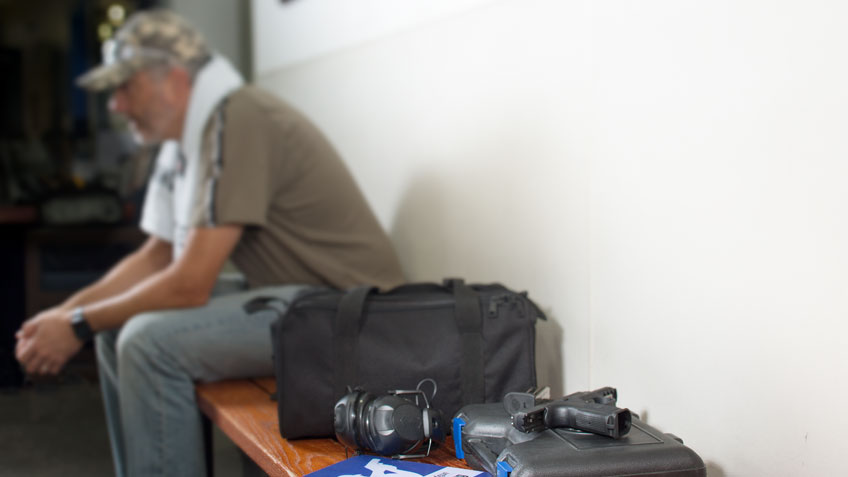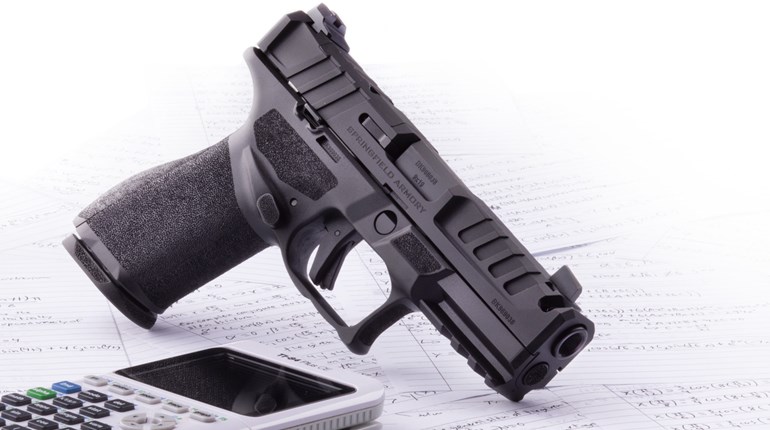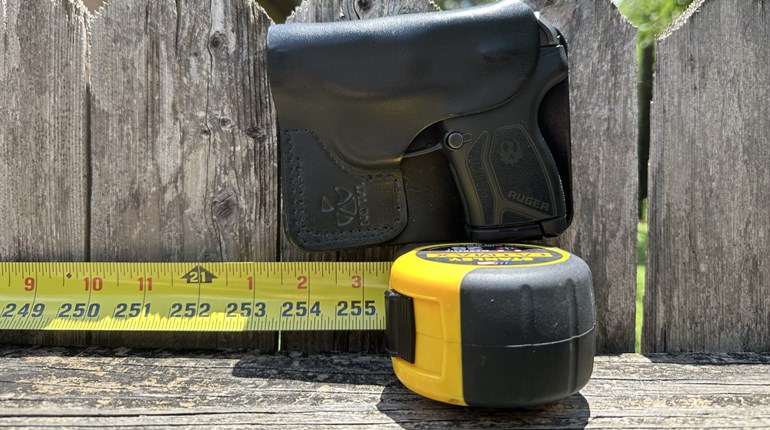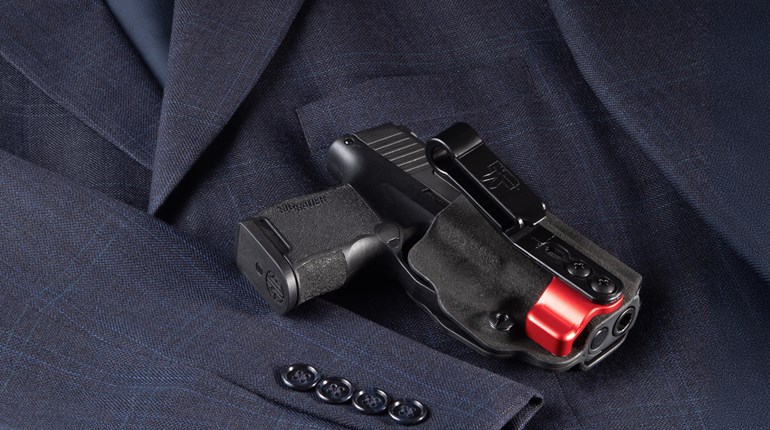
As you begin developing your firearm skills, there will be plenty of challenging and frustrating moments. Don’t look at these with too critical an eye. Instead, consider them a gift. Failure is a gift in our lives because it is always teaching us, forcing us to learn, making us a better person. It may not feel that way at the moment, but with some self reflection it very well can become your strongest ally on your road to skill development. Once you are able to evaluate your failures, you will know what to work on and where to spend your time, talent and treasure. The main areas you should consider can be broken down into three categories: technique, consistency and standards.
I am fond of saying in class, “I’m not looking for you to do it right—I’m looking for you to do it technically correct.” Doing it right can sometimes be measured by the outcome. You hit the target, but not because you had the needed skills to do so; you just got lucky. Technically correct means you performed each of the steps in the technique correctly, producing the positive outcome. There is a difference and it may seem subtle, but it is actually pretty big.
When we talk about technically correct, there are many ways to look at this subject. I would suggest you start by identifying the task: What are you trying to accomplish? Avoid answering that question with something like “hit the target” or “not to miss.” These are too vague. Instead, you need to dissect the technique to its component parts, what I call the micro tasks.
When you are looking at your technique at this level you see all sorts of things, both good and bad. Let’s talk about the master firing grip, or what I refer to as your master grip. Each person will have a unique grip, much like their fingerprint, but they still must meet certain objectives. We start by understanding there are five points of contact with your master grip. The first is your trigger finger on the home position, which is the location of your trigger finger at any time you are not actively engaging a threat. While each gun may be different, they all have a home position.
Next, is the strong-hand pinky finger. It must be wrapped around the base of the firing grip. Some grip surfaces are too small or too big for certain hand sizes, so you have to identify the minimum objective to achieve, which is the ability to apply pressure to the grip via the pinky. How much pressure you can deliver is going to be different for every gun and hand out there.
Then there is the weak-hand pinky finger. It wraps around the strong hand and rests somewhere in between the pinky and ring finger of the strong hand. Exactly where and how much pressure it can deliver will again be determined by the end user. Then there is the weak-hand thumb, which should be in line with the target. The thumb is oriented toward the target, literally pointing at the target while resting alongside the frame directly opposite of your strong-hand trigger finger. The heel of your weak hand occupies the open surface area of the grip.
Proper positioning would be achieved when the index finger is pressed up against the bottom of the trigger guard. Lastly, the strong-hand thumb will move to allow the heel of the weak hand to rest on the grip. Then, it comes to rest on top of the weak-hand thumb pointing downrange at the target as well. These points of performance when achieved to a minimum standard would meet the requirement for being technically correct.

The tough part is trying to get this grip configured technically correct over and over. This is where consistency comes into play. Consistency is the steadfast adherence to the same form. In this case, it would mean all of these points of performance are not only performed correctly, but repeatedly performed correctly. Too many times we overlook the importance of consistency. I try to encourage students to be boringly consistent. Seriously boring. There is a saying from my Naval Special Warfare community days, “Amateurs do it until they do it right, professionals do it until they cannot do it wrong.” That both simplistically and savagely defines consistency. It takes repetitions done again to a minimum standard. How many repetitions is up for debate, but let’s just say it should be a lot.
How do we generate both the high repetitions and the consistency of performance at the same time? You have to take it slow. You literally have to think your way through the problem one step at a time. I see most folks skip or bypass this point in their skill development. It is hard work. It takes discipline, but does it really? This is where I see frustration come into the picture. In the beginning there is this emotional high from the new experience of learning to shoot (or perform any other skilled task). The realization is that you can do this and with a little practice, you can get good at it. Then, with a lot of practice, you can even be great.
The hardest part as an instructor is keeping the fires going at this critical stage. Since everyone wants to be great right away—including yours truly—this point is sometimes the hardest one for new shooters. Once we can manage expectations, it can make for an easier road, but still one filled with challenges. I consider it one of the most misunderstood and lacking skills of an instructor: keeping your students engaged.

Many times, I will use simple tricks to help achieve the behavior I’m looking for in their technique. These tricks range from something like putting small stickers on the frame where I expect them to contact the firearm. I like doing this because it really is simple. I can even use different stickers for different hands—red for your right hand and yellow for your left hand, for example. I will put a small red sticker near the home position so the student knows exactly where to move their trigger finger. Then they just slow down until they can do it right more often than wrong.
I do something similar with their hand position. After assisting them to develop the proper master grip, I will draw a line with a marker connecting their hands. Now, they simply place their hands on the firearm so as to connect the lines. In order for the lines to be connected, the other points of performance (and contact) must be in place.
All of these tricks are designed for one purpose: to help create the environment for the student to succeed. That success will involve overcoming what I refer to as the three plateaus most shooters will experience. Starting out, you may feel like you are not that good, but you will quickly make huge gains. This shouldn’t surprise most since you have what amounts to a clean slate. You take on all this new information and within a short time period can see significant gains. Getting to this point is the first plateau, and it is the easy one.
From there you have to keep at it by practicing regularly. The gains you started out with lead you to believe you will keep making such big gains all the time and relatively quickly. What might have been measured in miles at first, however, is now measured in yards. This plateau is where the real skill begins to show, where all your hard work is noticeable. The good news is how easy it is to stay on this plateau. I say it is easy to stay here because of the hard work required to make it to the next plateau. The ascent to the first plateau was a leisure stroll in the park.
Then you jump off the path and start hitting some hills. Now, you are climbing cliffs where your progress is measured in inches. This final plateau is literally the top of the mountain. It’s not just difficult to get to; you have to work to stay there, and that is where consistency comes into play.

This final plateau is where you come to understand standards, why they exist and why they are so important. Without these standards, you have no true way of knowing whether you are making progress. Whatever you are doing, if it is worth doing, it is worth recording. Your progress must be observable, measurable and repeatable. Each of the plateaus has its own set of standards, but you don’t really appreciate them until you get to that final plateau because you didn’t really know they were there.
The more time you invest, the more you understand the importance of your technique, specifically being technically correct. Once your technique is familiar to you, meaning you understand right from wrong, consistency comes into the picture. You are always trying to achieve more right than wrong reps, so starting slowly and doing them right pays off. As you improve, the standards will get tougher.
It is like a weight-training program: As you get stronger, you lift more weight. The higher standards help push you—sometimes to fail. But, by this point, you realize failure is a gift to help you get better.




































